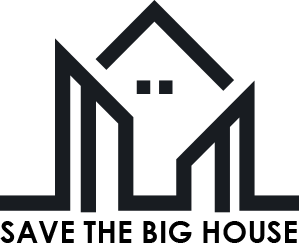
When water penetrates your house, acting fast and being meticulous will stop the spread of germs and prevent permanent damage. This step-by-step guide will take you through the process of cleaning, disinfecting, and protecting your family while your house dries out.
Safe Cleaning After Flooding
Your goal is to create a safe work area to begin the cleaning process. Shut down the electricity to the affected rooms, open the windows for ventilation, and put on personal protective equipment (PPE- see https://www.osha.gov/personal-protective-equipment for more details), i.e., gloves, rubber boots, eye protection, and a respirator if the odor is strong.
Next, your first task is to separate items you can clean (nonporous) from those that need to be discarded (i.e., soaked drywall, insulation, or sagging particle board).
- Remove standing water using pumps or dry/wet vacuums. If the water level is high or contaminated, schedule professional water extraction.
- Bag and discard porous debris. For drywall, cut out at least 12 inches above the water line.
- Clean surfaces of mud and residue using an all-purpose cleaner altered with detergent and warm water; remember clean first, disinfect second by simply washing and rinsing.
- Run fans and dehumidifiers to aid drying while you work. If units do collect water, empty tanks frequently.
What Disinfectants Work Best
Finally, after cleaning, select a disinfectant that is compatible with the surface and the category of water incurred. For hard, nonporous, use a disinfectant registered with the EPA according to the label’s contact time. Bleach is effective on tile, concrete, and metal surfaces but should never be combined with ammonia and should be used in a ventilated setting to avoid harmful fumes. Hydrogen-peroxide and quaternary-ammonium products are good alternatives for treating kitchen or bathroom surfaces.
For “category 3” or contaminated water, consider treating any effected areas as high hazard risk, or add an antimicrobial treatment to the subfloor and wall cavities. If the scope is overwhelming or the items are too valuable, search for reputable water damage restoration services Houston to help with product selection and safety best practices. If you later notice spots or smells, prepare to address that with mold remediation rather than additional surface cleaning.
Protecting Children and Pets

Children and pets are lower to the floor, touch more surfaces, and are likely to place things in their mouths. Children and pets should remain out of wet areas until they are fully dried and disinfected. One clean-space or “clean zone” can be used with a safe drinking water option, packaged-snacks, and a washable mat.
- Block access to hazards with safety gates or closed doors. If possible, keep cleaning products and supplies stored out of reach or in a locked area.
- Disinfect high-touch locations (doorknobs, drawer pulls, crib rails) every day during the cleanup period.
- Launder soft items that can be cleaned with hot water and high heat. Dispose of any plush toys (stuffed animals) that have gotten soaked.
- Use a covered litter box if you can or take dogs out away from work zones and clean their paw pads before reentering the home.
How to Sanitize Furniture
Now, you must determine what is salvageable. Upholstered furniture items that were soaked with contaminated flood water are arguably not it. If the item is salvageable and healthy, remove cushions or covers, and dry them appropriately with airflow and dehumidifier. After that, clean with detergent and then apply disinfectant based on the manufacturer’s instructions for contact time.
You can use a HEPA vacuum pass once dry, that should capture the fine residues. If frames and subcomponents were wet, you will need an expert to structural dry under fabrics or in connections and joints. Check this out for more additional information.
Preventing Future Contamination
Once the drying, cleaning, and disinfecting of surfaces are done, you will aim to control moisture and contamination of germs and mold returning. Indoor humidity should be under 50% for a few weeks, and air must always be moving. You will want to inspect all areas that had moisture or flooding, including closets, toe-kicks, and appliance areas (e.g., refrigerators).
- Discover sources of water: roofing leaks, gutters, foundation grading, and supply line leaks if applicable.
- Keep dehumidifiers running during the process and check using moist-meters or easy-moisture mapping notes.
- Remove the wet insulation and install appropriate barrier protection where needed and use foam seal around pipes for air gaps.
- Clean floor drains after a sewage loss, and store everything using plastic lidded containers that are elevated above the ground.
- Do a final sniff test or visual inspection, if the odors or stains remain schedule a visual assessment for targeted mold mitigation.
Cleaning of the affected area, disinfected thoroughly, and properly dried afterwards, are key in minimizing risk of health in you and your family’s health from a water emergency.

